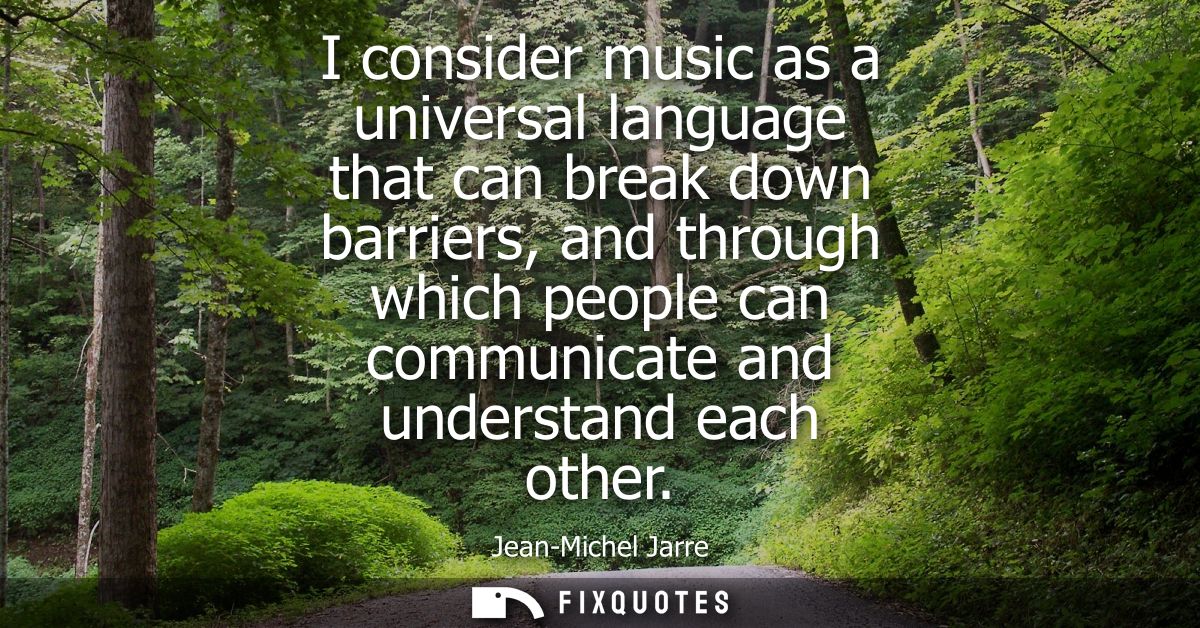"I consider music as a universal language that can break down barriers, and through which people can communicate and understand each other"
About this Quote
Music functions as a bridge where words often fail. Rhythm, melody, and timbre touch the nervous system directly, eliciting emotions that are recognizable across cultures: joy, sorrow, tension, release. A lullaby calms in Nairobi as it does in Oslo; a drumline can rally strangers who do not share a language. Because the medium is nonverbal, it bypasses the walls erected by grammar, ideology, and accent, creating a shared emotional space in which people can meet as humans rather than as categories.
Communication here is not about transmitting literal information but about aligning states of mind. When a crowd sways in time, heart rates synchronize and suspicion softens; entrainment makes empathy bodily. That is why gatherings around music, festivals, rituals, protests, worship, so easily breed solidarity. The same principle empowers cross-cultural collaboration: artists sample, reinterpret, and respond to each other’s traditions, discovering kinship in rhythm and structure even when the aesthetics differ. Listeners, too, learn to hear unfamiliar scales and grooves, expanding their sense of what beauty can be.
Technology amplifies this universality. Electronic instruments and digital networks strip sound to textures and pulses that invite anyone, anywhere, to participate. A beat uploaded in São Paulo can inspire a melody in Seoul within hours. The exchange creates understanding not through debate but through making together.
None of this denies cultural specificity; musical codes can be local and meanings contested. Yet beneath those differences lie shared biological and emotional responses, infants prefer consonance, bodies anticipate cadence, the ear seeks pattern and surprise. Music leverages those commonalities to open doors that conversation alone cannot, offering a neutral ground where curiosity replaces fear.
Calling music a universal language is therefore less a metaphor than a working method for coexistence: create sound, invite others to feel, and let that mutual resonance reduce the distance between us.
More details
About the Author

